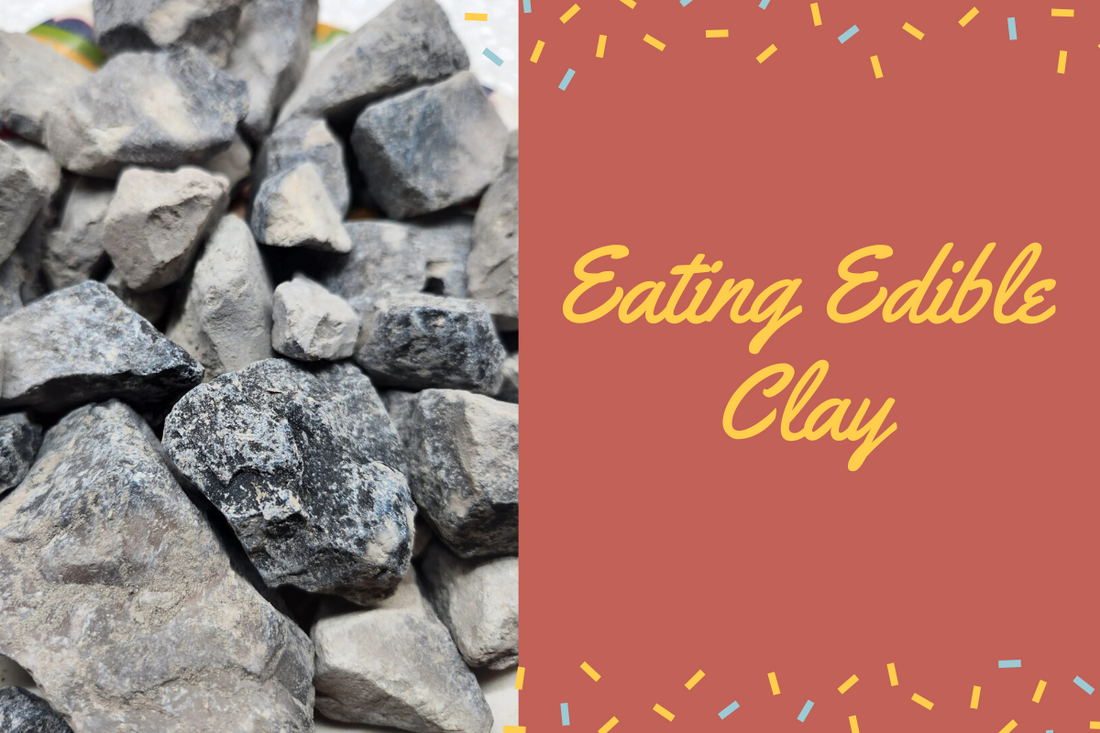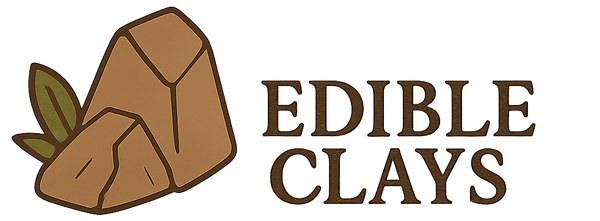
Top Benefits of Eating Edible Clay – Is It Safe?
Share
Introduction
The practice of eating clay, known as geophagy, has existed for centuries in many cultures, especially in India and Africa. In recent years, this tradition has gained attention from people exploring natural remedies, detox practices, and traditional wellness approaches. But a common question remains: Is edible clay safe to eat? And does it offer real health benefits?
In this blog, we explore:
- The health benefits of edible clay
- Why people eat clay
- Safety and possible side effects
- Cultural practices in India
- Where to buy natural edible clay online
What Is Edible Clay?
Edible clay is a naturally occurring substance that has been purified and processed for safe human consumption. It is different from regular soil or industrial clay and is free from harmful pathogens, heavy metals, and contaminants.
Common types of edible clay include:
- Bentonite clay
- Kaolin clay
- Roasted Multani Mitti
- Natural clay lumps
These clays are often sold in roasted, powdered, or raw lump form and have been used in Indian households for generations for their perceived cleansing, cooling, and detoxifying properties.
Visit EdibleClays.in to explore natural edible clay products.
Benefits of Eating Clay
Here are some commonly reported and researched benefits of edible clay when consumed responsibly:
1. Natural Detoxification
Edible clay, especially bentonite, has a negatively charged ionic structure. It can bind to positively charged toxins, bacteria, and heavy metals in the digestive tract, helping to flush them out naturally. This makes it a popular choice for detox programs.
2. Mineral Supplementation
Natural edible clay is rich in essential minerals like calcium, magnesium, iron, and potassium. For individuals with minor deficiencies, clay may serve as a mineral booster. However, it should never replace a balanced diet or multivitamin.
3. Digestive Support
Some users claim that ingesting edible clay improves digestion by soothing the gut lining, absorbing excess gas, and helping with conditions like bloating or loose stools. It can support overall digestive balance when used occasionally.
4. Skin and Internal Cleanliness
While clay is often applied to the skin, some believe that internal use promotes clear skin by eliminating internal toxins. Though anecdotal, many regular users report healthier skin as a secondary benefit of clay consumption.
Why Do People Eat Clay?
There are several reasons why people eat clay, ranging from cultural practices to modern wellness beliefs.
Cultural and Traditional Use
The clay eating tradition in India is still observed in many tribal and rural regions. It is especially common during fasting, seasonal rituals, or cleansing practices. In areas like Madhya Pradesh, Gujarat, Odisha, and Andhra Pradesh, roasted clay and black clay balls are consumed for their cooling effects and traditional value.
Pregnancy Cravings
Some pregnant women experience pica, a condition where they crave non-food items such as soil or clay. Edible clay may soothe nausea or fulfill a psychological or mineral-based craving. However, any clay consumption during pregnancy must be medically supervised.
Natural and Holistic Wellness
In Ayurveda and holistic medicine, edible clay is used to balance certain doshas, particularly Kapha and Pitta. People on natural healing paths often incorporate clay into detox routines or use it to manage occasional indigestion or acidity.
Is Edible Clay Safe to Eat?
Yes, edible clay can be safe, but only under the following conditions:
- It must be food-grade and purified
- It should be consumed in very small quantities (2–5 grams)
- It must come from a trusted source
Unsafe practices include:
- Consuming clay from the ground, garden, or pottery materials
- Daily or excessive consumption
- Using untested or contaminated products
You can safely purchase tested, purified, and packaged clay at EdibleClays.in.
Side Effects of Eating Clay
Despite its potential benefits, there are risks and side effects of eating clay, especially when used improperly or excessively.
- Constipation: Clay is absorbent and may slow digestion if overused.
- Iron Absorption Interference: Clay can hinder iron absorption, increasing the risk of anemia.
- Heavy Metal Exposure: Poorly sourced clay may contain harmful elements like lead or arsenic.
- Addictive Behavior: Some individuals develop a habit of clay eating (especially with pica), leading to nutrient imbalances.
Moderation is key. Always consult with a healthcare provider before using clay for dietary or detox purposes.
Clay Eating Tradition in India
Clay eating has been practiced in India for generations. In tribal communities and rural areas, edible clay is valued for its perceived purity, earthiness, and spiritual cleansing.
Common traditional forms include:
- Roasted clay bricks (often eaten during fasting)
- Black clay balls from riverbanks
- Roasted multani mitti
You can find these varieties online at EdibleClays.in, especially during seasonal festivals or fasting months.
Where to Buy Natural Edible Clay
Not all clay is safe. To protect your health, always buy clay that is:
- Food-grade certified
- Lab-tested for heavy metals
- Properly packaged and labeled
You can explore a wide variety of roasted, raw, and powdered edible clays online at EdibleClays.in.
Tips for First-Time Users
If you’re new to edible clay, follow these tips:
- Start with a very small amount (about 1 gram).
- Drink plenty of water to avoid constipation.
- Do not consume daily; limit to once or twice a week.
- Choose roasted or powdered clay for easier digestion.
- Never consume unknown or unverified sources of clay.
Frequently Asked Questions
Is edible clay safe during pregnancy?
Some pregnant women crave clay, but it should only be consumed if purified, tested, and approved by a medical professional.
Does edible clay really detox the body?
Yes. Clays like bentonite bind to toxins in the gut and help remove them. This process supports natural detox.
What does edible clay taste like?
Clay has an earthy, chalky, or sometimes smoky flavor. Roasted clay is often crunchy and more palatable.
Can I eat clay every day?
Daily consumption is not advised. Overuse may lead to constipation or nutrient imbalance.
How is edible clay different from multani mitti?
Multani mitti is generally for external use. However, edible roasted multani mitti is processed for safe consumption. Only eat if labeled as food-grade.
Explore edible roasted multani mitti here.
Conclusion
Edible clay is more than a health trend. It’s part of a deep-rooted cultural tradition in India and other parts of the world. It offers possible health benefits such as detoxification, mineral support, and digestive aid. However, safety depends entirely on the source, quality, and quantity consumed.
If you’re interested in exploring edible clay for personal use or wellness, make sure to choose tested, natural, and certified options.
Visit EdibleClays.in to shop for high-quality edible clay products delivered across India.
